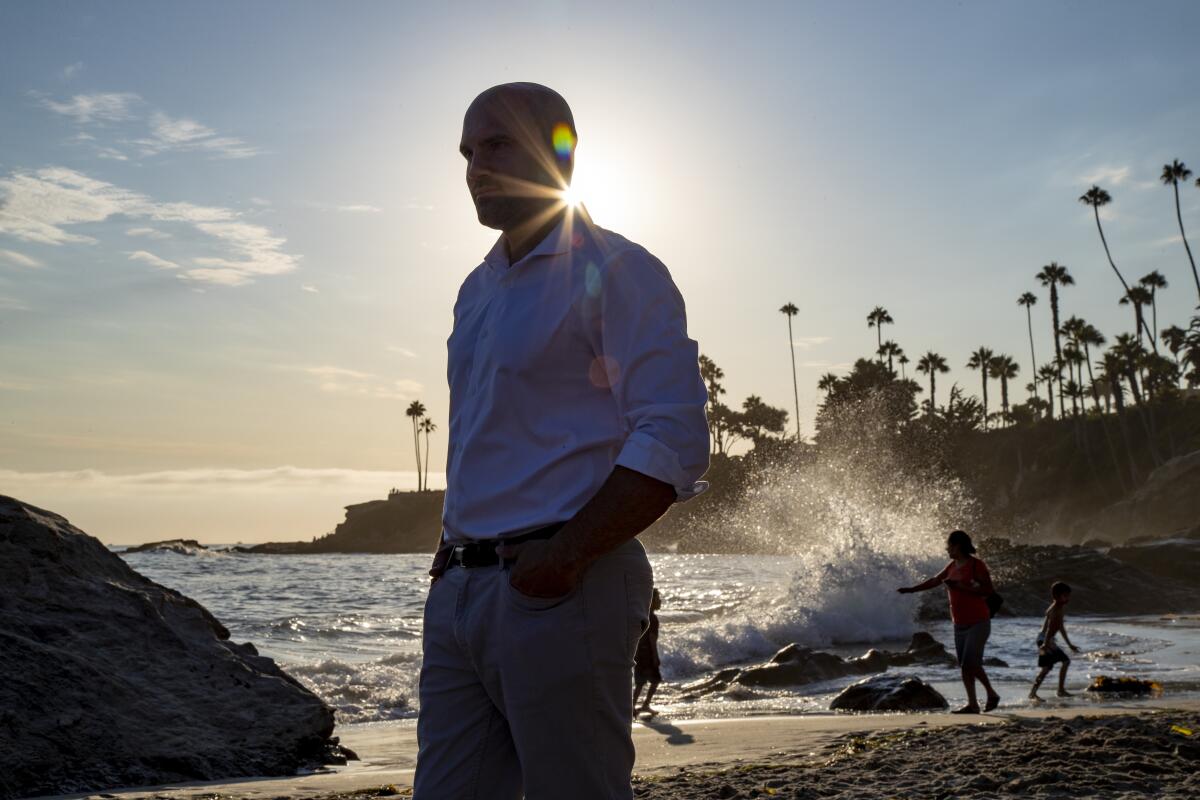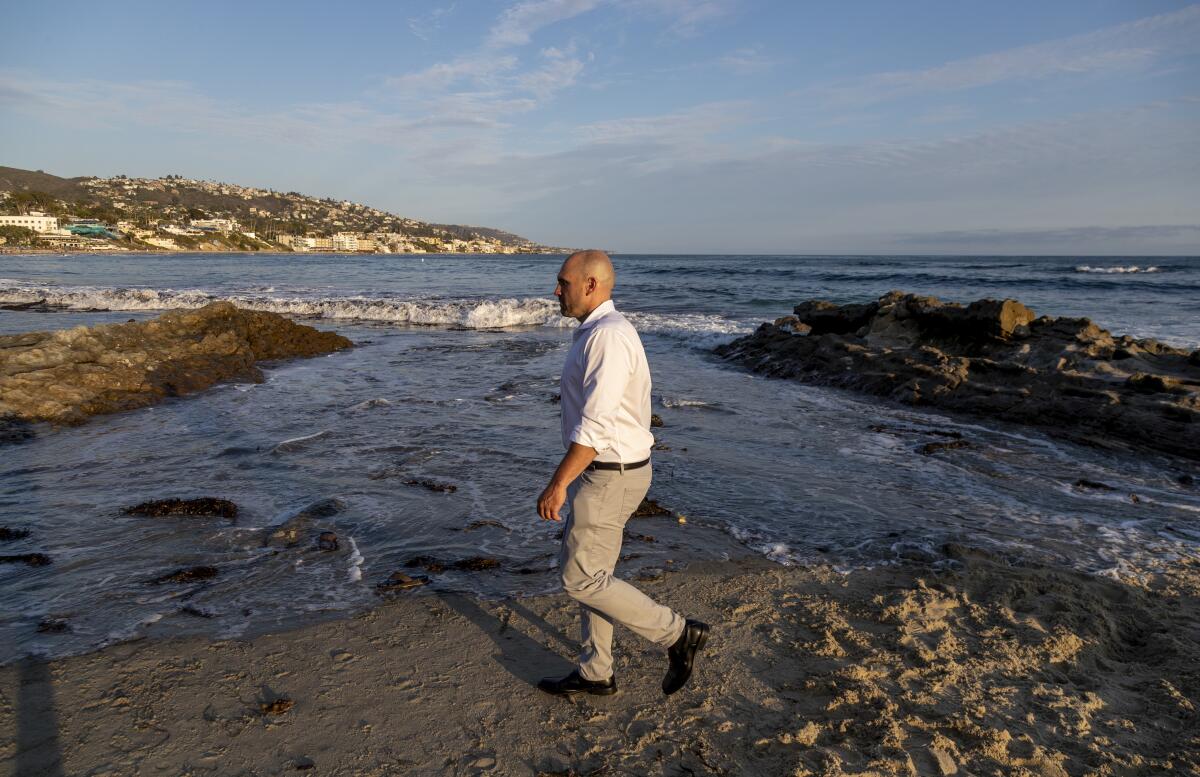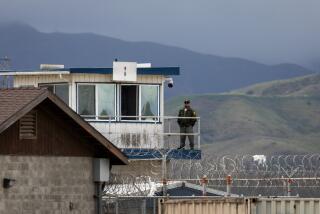Solitary confinement is shrouded in secrecy and open to abuse. Why does California allow it?

- Share via
SACRAMENTO — Why have any soft feelings for those locked in solitary confinement in our prisons, jails and immigrant detention centers? They must be the worst of the worst, right? The unrepentant serial killers, the gang leaders carrying on business as usual behind bars, the criminals with nothing to lose and no problem smashing a few skulls if given the chance?
Personally, I have little sympathy for violent criminals who continue their violence while incarcerated. But like most things with crime and punishment, it turns out solitary confinement is not that clear-cut. Shockingly, or perhaps not, this harshest of measures is often applied arbitrarily, with little or no accountability.
California has a long and troubled history of using solitary confinement with dubious justification, sometimes for years at a time — one reason state prisons have been under court oversight for seven years. In fact, there’s not even a standard definition for what counts as solitary in this state or even what we call it — the hole, lockdown, segregation — and little in the way of having to keep tabs on who is being subjected to it, for how long or why.
Vanessa Ramos can tell you all about the terrible unfairness of the current system. She still has nightmares years after her time in solitary while being incarcerated in Los Angeles’ Twin Towers jail as a 19-year-old, convicted of stealing classic Chevys and selling drugs. She’d been living on the streets after being abused as a child, and had given birth just weeks before being arrested.
She says she was both detoxing from drugs and dealing with the loss of her baby — not knowing where the child was — when she went behind bars, and acted out because she needed mental health and medical care. Instead, she found herself in a “scary” basement cell where the steel surroundings amplified every sound, and where she was allowed out only once a week to shower. She cycled in and out of that isolation for days and weeks at a time, she said, never certain how long she would be there, deteriorating mentally with each stint.

Her long hair became matted and she recalls hearing screaming and not knowing if someone was being hurt. Her only solace was watching a hand push her food tray through a slot in the door, proof that other people existed.
“I remember that I would see the hand, and I remember looking forward to that because that let me know [there] was a person,” she said. “I went to jail because I stole a car. You don’t have the right to further harm me. The fact that it is still going on in California in the U.S., how is it still happening?”
Ramos, out of prison for more than two decades and reunited with her child, is now fighting to help pass Assembly Bill 2632, authored by Assemblyman Chris Holden (D-Pasadena), which would limit the use of solitary in California.
The Holden bill, modeled after a New York law that went into effect a few months ago, would remove much of the murkiness around solitary by limiting its use to 15 days at a stretch and 45 days in any 180-day period. It would also prohibit its use for some types of people — including pregnant women (one woman alleges she gave birth alone in an Alameda County jail cell a few years ago, prompting a lawsuit that ended with a $250,000 payout), those younger than 26 or older than 59, and people with certain disabilities or mental health disorders. Facilities would also be required to keep and release records on how and why solitary is used.
The legislation, which will face a huge hurdle next week, would bring California more in line with United Nations rules that prohibit indefinite solitary confinement and consider its prolonged use to be a form of psychological torture.
It’s “below the minimal standard for human decency,” said Kevin R. McCarthy, not to be confused with the Trumpian politician of a similar name. McCarthy was in solitary confinement for 10 years at Pelican Bay State prison and, like Ramos, wants to see the use of solitary end.
“This is not a political issue,” he said. “This is a human rights issue. I don’t care where somebody’s political views lie. Everybody wins by treating everybody with reciprocal humanity.”

Ramos and McCarthy make powerful arguments for reconsidering isolation, and understanding the mental trauma it causes, but California has its own argument for keeping solitary as it is: Change is too expensive.
Though the California Department of Corrections and Rehabilitation told me it doesn’t comment on pending legislation, I obtained an email its legislative affairs chief sent to the Assembly in May. The email claims it would cost “high hundreds of millions up to billions of dollars” to curtail the use of solitary in the 31 state prisons that have such restricted facilities. CDCR would, for example, have to expand the exercise yards (estimated to cost $256 million to $512 million) and provide “programming” such as education services to those in solitary who currently receive little, if any (estimated to cost $775 million to create space for that).
That estimate is way overblown, according to Holden, the bill’s backers and an academic expert I called. They say that with an average of 4,000 people in solitary at a time across the system, cutting back on its use would actually create a saving of up to $300 million in reduced staffing and other efficiencies.
Keramet Reiter, a criminology professor at UC Irvine who has written a book about solitary in California, said corrections officials nationwide are deploying the cost argument and it “is definitely a defense tactic to avoid implementing these types of reforms.”
But that argument has dogged Holden’s bill through the Legislature and may lead to its quiet death next week. Monday, the Senate Appropriations Committee put the bill into the “suspense file” because of its alleged cost.
Suspense pushes the bill into a secretive and nebulous process that can lead to the proposal being killed with little or no public debate. Next Thursday, the committee will either let it out of suspense — or let it expire with a whimper.
Democrats often use the suspense file as a back-alley dumpster for stuff they’d prefer not to trash in plain sight, like potential human rights violations of prisoners, always a messy topic with voters who may have little sympathy for those who have committed crimes.
But Holden’s bill should move forward because solitary confinement can’t continue to be shrouded with secrecy as it has been for decades, with disturbing outcomes.
In 2009, two Pelican Bay men in the same solitary unit as McCarthy — Todd Ashker and Danny Troxell — filed a handwritten federal lawsuit claiming their treatment violated the 8th Amendment, which prohibits cruel and unusual punishment. At the time, more than 500 men at Pelican Bay had been held in solitary for more than 10 years, and 78 men had been in isolation for more than 20 years.
It took awhile, and a bit of legal help, but they won their Ashker vs. Governor of California case in 2015 and the state entered into a settlement agreement for reforms. In February, a judge ordered another year of oversight, citing plaintiffs’ evidence that CDCR is “fabricating or exaggerating rule violations” to put people into solitary, and continuing to keep others in solitary or a halfway setting that is like a “purgatory where people stay for an indefinite amount of time,” said Matthew Strugar, an attorney on the case.
CDCR sent me its appeal after saying it couldn’t comment on pending litigation. There, among other arguments, it denies that it has fabricated anything.
But the stories keep coming. Every day, California is inflicting the same type of treatment on incarcerated people that Ramos and McCarthy survived and that most of us on the outside are completely in the dark about. So the suspense file is not where our scrutiny of solitary confinement should end.
McCarthy said the state can never make amends for what he has been through, but it can prevent others from suffering the same.
All he asks is that we don’t “sweep it under the rug,” he said, though that’s exactly where it is right now.
More to Read
Sign up for Essential California
The most important California stories and recommendations in your inbox every morning.
You may occasionally receive promotional content from the Los Angeles Times.











